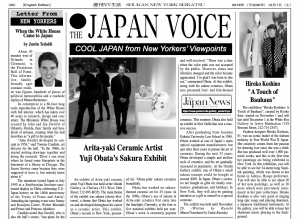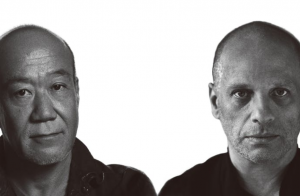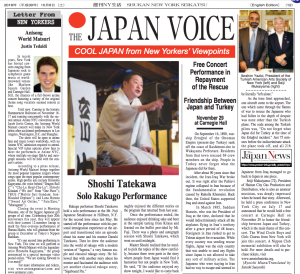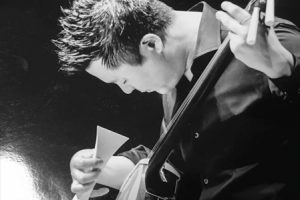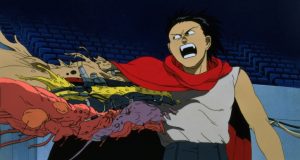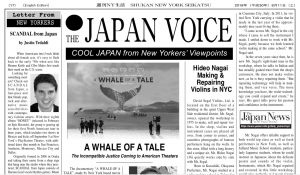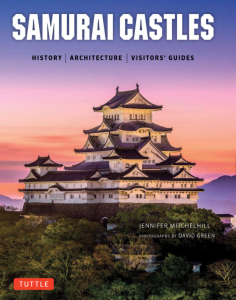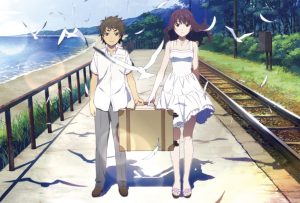Justin’s Japan: When the White House Came to Japan
By JQ magazine editor Justin Tedaldi (CIR Kobe-shi, 2001-02) for Shukan NY Seikatsu. Justin has written about Japanese arts and entertainment for JETAA since 2005. For more of his articles, click here.
About 30 minutes west of Orlando in Clermont, Florida is the Presidents Hall of Fame. This informative, family-friendly spot contains realistic wax figures, hundreds of pieces of political memorabilia, and a roadside replica of Mount Rushmore.
Its centerpiece is a 60-foot long scale reproduction of the White House with full interior, which has taken over 40 years to research, design and construct. The White House in Miniature was created by John and Jan Zweifel of Orlando, Florida, their family, and hundreds of artisans, creating what the Hall describes as “a gift to the people.”
“John Zweifel developed its concept in 1956,” said Tommy Candido, art director for the Hall. “In the 1960s, he started putting drawings together and doing the research. There’s one story where he found some blueprints in the basement of a library in Chicago. The Secret Service came because they were supposed to have it, but nobody knew about it.”
The miniature toured Japan in July 1995 at a Smithsonian Institute-sanctioned display in Chiba celebrating U.S.-Japan history on the 140th anniversary of the Treaty of Peace and Amity. Attending the opening event were Jimmy and Rosalynn Carter, Walter Mondale, and Prince and Princess Akishino.
Candido noted that Zweifel, who is also the Hall’s owner, “has plans for the U.S. Tricentennial in 2076. He has passion and wants this to reteach the people that the United States is more than politics; the replica and the museum transcends politics. If there’s anything that in existence is bipartisan, it’s here.”
The Presidents Hall of Fame is located at 123 N Hwy 27 in Clermont, and is open seven days a week. For more information call (352) 394-2836, email phofjz@gmail.com, or visit their homepage at www.thepresidentshalloffame.com.
JQ Magazine: Nippon in New York — Joe Hisaishi, Anime NYC, ‘Shoplifters’
By JQ magazine editor Justin Tedaldi (CIR Kobe-shi, 2001-02). Justin has written about Japanese arts and entertainment for JETAA since 2005. For more of his articles, click here.
From the silver screen to the stage to J-pop, November is just as colorful as the autumn leaves drifting through the air. Add these live events to the mix and you’ve got an irresistibly epic rundown.
This month’s highlights include:
Nov. 3, 5
Dragon Ball Z: Saiyan Double Feature
Regal E-Walk 42nd Street 13, 247 West 43nd Street
AMC Empire 25, 234 West 42nd Street
$12.50
Catch these two DBZ films back-to-back for the first time in U.S. theaters—fully remastered! In Bardock: The Father of Goku, a low-class Saiyan soldier unexpectedly inherits the ability to see into the future. Haunted by visions of his own end as well as the destruction of his entire planet, Bardock sets off on a nightmarish race with fate to advert the impending disaster. Then, in Fusion Reborn, an industrial disaster in Other World unleashes the monstrous Janemba, a beast who grows stronger with each passing minute. While Goku and Vegeta fight for Other World’s survival, Goten and Trunks confront a ghoulish army of the undead back on Earth, where only an unprecedented act of teamwork can save the universe! Presented in English.
Saturday, Nov. 10, 7:30 p.m.
Akiko Yano + Seiho: Unusual Pairings
Japan Society, 333 East 47th Street
$38, $30 members
Beloved pianist/singer-songwriter Akiko Yano returns to Japan Society for a U.S. premiere collaboration with rising Osaka-based electronic sound artist/DJ and ikebana enthusiast Seiho. This one-of-a-kind concert mixes the singular stylings of Yano’s piano and singing with Seiho’s thumping, atmospheric beats, and flower arranging! Join us on this moody trip into the soundscapes of these two formidable artists as their music melds, merges and even takes shape in floral form.
Sunday, Nov. 11, 7:30 p.m.
Joe Hisaishi and David Lang: Music Future Vol. 5
Zankel Hall, 881 Seventh Avenue
$59-$99
Music Future is a concert series started in 2014 by Studio Ghibli film composer, conductor, and pianist Joe Hisaishi. Intended to introduce the latest in contemporary classical music, Music Future includes works from composers Arnold Schoenberg, John Adams, David Lang, Philip Glass, and Bryce Dessner performed by the Future Orchestra. In addition, Hisaishi presents a newly composed work each year. This year, David Lang will join Music Future at Carnegie Hall to present his latest work, Increase.
JQ Magazine: Book Review — ‘Perfume’s “GAME”’
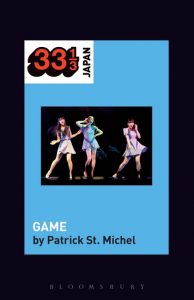
“To call Perfume’s GAME a ‘deep dive’ is both an understatement and compliment. From its very first chapter, St. Michel’s decade of experience writing about music shines.” (Bloomsbury Academic)
By Greg Beck (Hiroshima-ken, 2006-11) for JQ magazine. Greg is a writer, producer, home brewer, and Social Coordinator for JETAA Southern California and Arizona. A former news producer for Tokyo Broadcasting System in New York, he currently works freelance in Los Angeles. For more cinema reviews, follow him on Twitter at @CIRBECK #MovieReview.
If you were to ask me prior to writing this, I vaguely recalled Perfume as some heavily autotuned “girl group” from Hiroshima. Now that I have read Perfume’s GAME, all of that has changed.
Written by JET alum Patrick St. Michel (Mie-ken, 2009-11) and released earlier this year, this insightful work of nonfiction is part of a series called 33 1/3 Japan, also related to a larger, global series of short, music-based books sharing the 33 1/3 title. This book specifically goes beyond simple fandom, providing a master class on the early-to-sophomore career of the pop group Perfume, and how their album GAME would become an important influence in popular music on the international level.
To call Perfume’s GAME a “deep dive” is both understatement and compliment. From its first chapter, St. Michel’s decade of experience writing about music shines. That’s an extremely difficult task for the written word, given we perceive music using a different sense entirely. Descriptive prose does an excellent job identifying and elucidating songs and their smaller components. St. Michel starts with a modest introduction of his personal discovery of Perfume and how it helped him connect to his Japanese community, which for any JET alum should feel familiar, if not nostalgic. Next, he tells the story of the members of Perfume and their humble beginnings. Had the rest of the book been solely focused on their music, it would only be worth reading if you were already a diehard fan, but the author does much more.
JQ Magazine: Book Review — ‘Japanese Cooking with Manga’

“Japanese Cooking with Manga is an entertaining introduction to the world of Japanese food, and an approachable book for those interested in learning more about Japanese food culture.” (Tuttle Publishing)
By Alexis Agliano Sanborn (Shimane-ken, 2009-11) for JQ magazine. Alexis is a graduate of Harvard University’s Regional Studies-East Asia (RSEA) program, and currently works as a program coordinator at the U.S.-Asia Law Institute of NYU School of Law. Additionally, she is an artist and independent filmmaker, currently working on a documentary about food education in Japan entitled Nourishing Japan.
Tuttle’s latest cookbook, Japanese Cooking with Manga, captures the ethos of creating food which suits the place you live. This quirky read was written by the Gourmand Gohan team comprised of Spaniards Alexis Aldeguer and Ilaria Mauro and Japanese-living-in-Barcelona “Maiko-san,” highlighting the universal love of Japanese food and its adaptations around the globe.
Created to be part comic book and part recipe book, this is a cookbook that you “read,” filled with colorful and humorous visual explorations of preparing Japanese food. Drawn in an artistic style more reminiscent of Tintin than Totoro, the trio guides us through visuals of chopped ingredients and simmering pots culminating in the completed meal. In truth, it would be difficult to consult the book while cooking (there’s something to be said for a more traditional layout); it’s more coffee table or bedside reading. Nevertheless, readers, especially those with an appreciation for comics, will likely enjoy this book.
In addition to recipes and narrative, the writers take care to provide background information, context and history to the world of Japanese cuisine—such as the importance of seasonal ingredients, the history of sushi, or how to identify fresh fish. For anyone embarking and revisiting the world of washoku, these principles are good reminders of the foundation to the cuisine and culture.
Justin’s Japan: Anisong World Matsuri
By JQ magazine editor Justin Tedaldi (CIR Kobe-shi, 2001-02) for Shukan NY Seikatsu. Justin has written about Japanese arts and entertainment for JETAA since 2005. For more of his articles, click here.
In recent years, New York has hosted concerts ranging from Japanese rock to symphonic game music at world-renowned venues like Madison Square Garden and Carnegie Hall. Still, the chances of a full-blown anime concert featuring a variety of the original theme song vocalists seemed remote at best.
Until now. Coming to the historic Hammerstein Ballroom on November 16-17 and running concurrently with the second annual Anime NYC convention at the Jacob Javits Center, the Anisong World Matsuri concert event will make its New York debut after acclaimed performances in Los Angeles, Washington, D.C., and Shanghai.
The show will be open to anime fans and music lovers worldwide, with no Anime NYC admission required to attend. Special VIP ticket options allow fans to meet the performers at Anime NYC where multiple on-stage Q&As and autograph sessions will be held with the concert’s artists.
According to a press release, Anisong World Matsuri brings together the most popular Japanese singers whose songs span the most popular contemporary anime. High-profile acts include Hironobu Kageyama, the voice behind “Dragon Ball Z”’s “Cha-La Head-Cha-La”; Hiroshi Kitadani (“We Are!” from “One Piece”); TRUE (“Mobile Suit Gundam: Iron-Blooded Orphans”); and Luna Haruna (“Sword Art Online,” “Fate/Zero,” “Monogatari”).
Closing the event is Morning Musume, one of the biggest Japanese girl groups of all time. Celebrating their 20th anniversary this year, they will appear with their current 12-member lineup to mark the final overseas performance of Haruna Iikubo, who will graduate from the group in December at Tokyo’s Nippon Budokan.
“It’s our second time performing in New York. This time we will perform at Anisong World Matsuri with the legendary artist Hironobu Kageyama,” the group announced in a special message video posted online. “We are looking forward to it so much!”
For more information and tickets, visit www.anisongmatsuri.com and www.animenyc.com.
JQ Magazine: Nippon in New York — New York Comic Con, ‘RWBY,’ ‘Spirited Away’
By JQ magazine editor Justin Tedaldi (CIR Kobe-shi, 2001-02). Justin has written about Japanese arts and entertainment for JETAA since 2005. For more of his articles, click here.
The Japan-centric events of the month ahead promise to be as rich and full as autumn itself—brisk and colorful, with a dash of unpredictability.
This month’s highlights include:
Oct. 4-7
Jacob K. Javits Convention Center, 655 West 34th Street
$50 (for Thursday, Oct. 4)
Breaking attendance records each year, the East Coast’s biggest gathering for fans of comics, film, anime and manga returns with its biggest roster of Hollywood talent to date, featuring exclusive screenings, gaming, cosplay photo ops, and more! Enjoy interactive panels on Oct. 4-6 from publishers Vertical Comics and Kodansha Comics, and check them out at booth #2109 to pick up con-exclusive merch and pre-release titles like APOSIMZ, Battle Angel Alita and The Ghost in the Shell: Global Neural Network. Special guests this year include Masako Nozawa (discussing the upcoming film Dragon Ball Super: Broly at the Hulu Theater at Madison Square Garden Oct. 5), Toshihiro Kawamoto (Cowboy Bebop) and Akira Himekawa (The Legend of Zelda)!
Friday, Oct. 5, 7:30 p.m.
Hidejiro Honjoh x ICE: Shamisen Evolution
Japan Society, 333 East 47th Street
$38, $30 members
Listen to Hidejiro Honjoh, young shamisen prodigy and disciple of Hidetaro Honjoh, create this traditional instrument’s 21st-century voice in an evening featuring living composers from the U.S. and Japan. Joined by members of the most sought-after contemporary music group International Contemporary Ensemble (ICE), Hidejiro delivers three world premieres composed by Grammy-nominee Vijay Iyer, Nathan Davis and Yu Kuwabara. The program also includes pieces by Yuji Takahashi and Dai Fujikura, along with the U.S. premiere of the full score of Scott Johnson’s Up and Back for shamisen, electric guitar, cello and piano. Followed by a MetLife Meet-the-Artists Reception.
Oct. 24-28
Locations and prices vary
Taste what you see on the screen! The Food Film Festival specializes in creating multisensory food and film experiences. At their events, guests watch films about food and simultaneously taste the exact dishes they see on the screen…right in their seats! This year’s events include the world premiere of Anthony Bourdain Parts Unknown / Lower East Side (Oct. 24), and Chikarashi: Sustainable, Chef-Driven Poke Bowl (Oct. 26), about the Manhattan-based contemporary sea-to-table eatery inspired by Japanese and Hawaiian cuisine. For a complete listing, click here.
JQ Magazine: Film Review — ‘Kusama: Infinity’
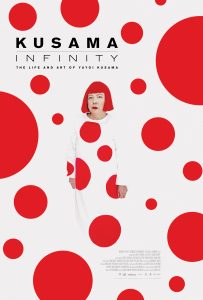
“Clocking in at just 78 minutes, this documentary from director Heather Lenz is deceptively compact. Within its swift running time, viewers will be regaled with how Kusama overcame impossible odds to become the top-selling female artist in the world.” (Courtesy of Magnolia Pictures)
By Stacy Smith (Kumamoto-ken CIR, 2000-03) for JQ magazine. Stacy is a professional Japanese writer/interpreter/translator. She starts her day by watching Fujisankei’s newscast in Japanese, and shares some of the interesting tidbits and trends together with her own observations in the periodic series WITLife.
I’ve always been an admirer from afar of Yayoi Kusama’s polka dotted and pumpkin themed artwork, but I have never waited hours in line to see it, as many New Yorkers did when her mirrored “Infinity Room” made it to the city last year. This lack of intimate knowledge regarding her work might be why I found the new film Kusama: Infinity about this amazing 89-year-old artist to be so revelatory. Clocking in at just 78 minutes, this documentary from director Heather Lenz is deceptively compact. Within its swift running time, viewers will be regaled with how Kusama overcame impossible odds to become the top-selling female artist in the world.
Born into a dysfunctional family in Matsumoto City in northern Nagano Prefecture, Kusama grew up during World War II. Her father was unfaithful and her mother’s reaction to this was to become angry and violent, even destroying Kusama’s artwork which she began creating at age 10 (The film suggests that this trauma is behind the maniacal energy that Kusama channels into her creations). Interestingly enough, her mother agreed to let her attend art school on the condition that she attend finishing school as well, but Kusama never set foot in the latter.
I had known that she spent time in New York, but the story of how she got here was fascinating. Kusama respected Georgia O’Keefe, and sent her a letter along with some of her works. After receiving a reply, in 1958 Kusama came to New York on a wing and a prayer. Before she left Japan she burned most of her early works, promising to make better ones in the future. During her time here she met legendary artists like Andy Warhol and Donald Judd, the former of whom she was distraught to later find had stolen her work. Kusama got caught up in the spirit of the 1960s counterculture and was involved in many “happenings,” such as body painting festivals and anti-war demonstrations. She even crashed the Venice Biennale exhibition in 1966 with an installation of 1,500 mirror balls on the lawn outside the pavilion, clad in a red leotard amongst them. Despite the double punch of sexism and racism that Kusama faced, she managed to make a name for herself.
JQ Magazine: Nippon in New York — ‘Akira’ @ 30, SCANDAL from Japan, ‘Dragon Ball Z’
By JQ magazine editor Justin Tedaldi (CIR Kobe-shi, 2001-02). Justin has written about Japanese arts and entertainment for JETAA since 2005. For more of his articles, click here.
As the summer winds fade into fall colors, the weeks ahead are shaping up with these exciting events, ready to be enjoyed after Labor Day.
This month’s highlights include:
Now through Sept. 6
Metrograph, 7 Ludlow Street
$15
More than any single feature film, Katsuhiro Otomo (Memories, Steamboy)’s adaptation of his own manga series is the one that introduced the glories of Japanese anime to an international audience. In 2019, thirty-one years after the Japanese government nuked Tokyo as damage control for an experiment involving using ESP on children, biker Kaneda rides one of the most iconic motorcycles in cinema into the unknown, on a mission to save his friend Tetsuo from a vast and far-reaching conspiracy. A feast of imagistic imagination, climaxing in an unforgettable battle royale in the Tokyo Olympiad. Presented in Japanese with English subtitles.
Thursday, Sept. 5, 8:00 p.m.
PlayStation Theater, 1515 Broadway
$45
SCANDAL is one of Japan’s most popular rock bands, epitomizing the J-rock aesthetic. The four-piece unit adeptly blends pop, rock and alternative music sensibilities with hip and contemporary fashion sensibilities and unstoppable girl star power. The band is presently in the midst of a world tour in support of its eighth record, HONEY, which was released in February and peaked at Number Three on the Japanese Oricon weekly sales charts and extended the band’s streak of being the only girl group to consecutively have each of their albums place the Oricon Top Five. The album features ten tracks including a rendition of the band’s 10th anniversary single, “Take Me Out.”
Sept. 6 & 10
Perfect Blue: 20th anniversary
AMC Empire 25, 234 West 42nd Street
AMC Kips Bay 15, 570 Second Avenue
Regal Union Square 14, 850 Broadway
$12.50
Perfect Blue, the groundbreaking and rarely screened first film from the legendary late director Satoshi Kon (Tokyo Godfathers, Paprika), returns to theaters for its 20th anniversary in a brand-new digital transfer. Rising pop star Mima has quit singing to pursue a career as an actress and model, but her fans aren’t ready to see her go. Encouraged by her managers, Mima takes on a recurring role on a popular TV show, when suddenly her handlers and collaborators begin turning up murdered. Harboring feelings of guilt and haunted by visions of her former self, Mima’s reality and fantasy meld into a frenzied paranoia. As her stalker closes in, in person and online, the threat he poses is more real than even Mima knows, in this iconic psychological thriller that has frequently been hailed as one of the most important animated films of all time. The September 6th screenings are presented in Japanese with English subtitles and the September 10th screenings are dubbed in English.
Justin’s Japan: SCANDAL from Japan
By JQ magazine editor Justin Tedaldi (CIR Kobe-shi, 2001-02) for Shukan NY Seikatsu. Justin has written about Japanese arts and entertainment for JETAA since 2005. For more of his articles, click here.
When Americans into J-rock think about all-female acts, it’s easy to flash back to the early ’90s when acts like Shonen Knife and Cibo Matto first made their mark on the U.S. scene.
Looking for something modern? Check out SCANDAL from Japan, a four-piece unit that blends pop, rock and alternative music sensibilities with contemporary fashion smarts. With their eighth album HONEY (released in February on Epic Records), the group is gearing up for their first North American tour in three years, which includes two shows in Mexico, kicking off September 5th at New York’s PlayStation Theater, with additional dates that month in San Francisco, Anaheim, Monterrey, Mexico City and Dallas.
Originally formed in 2006 in Osaka and taking their name from a shop sign that hung near the studio where they practiced, SCANDAL from Japan consists of Haruna (lead vocals/rhythm guitar), Mami (lead guitar/backing vocals), Tomomi (bass/lead vocals) and Rina (drums/keyboards/guitar/backing vocals), who shared a love rock bands and artists ranging from Green Day, Foo Fighters and Paramore to the pop styling of Taylor Swift and Pink. Their own music has appeared in TV and anime series, and the band has its own original fashion brand – Feedback! – that is produced and designed by all of the members.
For the new album, Haruna explains, “We focused this album around what we individually like to do as well as what we like to do as a group. We wanted to make music that represents all of us and also songs and subjects told from the standpoint of a girls’ band. We also wanted to go all-in for the 10 -year anniversary of our debut. HONEY pays homage to that and also shows has we have continued to evolve as a group.”
For more information and tickets, visit www.scandal-4.com or the band’s Facebook page at /scandalofficial.
JQ Magazine: Nippon in New York — Sailor Moon, Liberty City Anime, Meg Okura
By JQ magazine editor Justin Tedaldi (CIR Kobe-shi, 2001-02). Justin has written about Japanese arts and entertainment for JETAA since 2005. For more of his articles, click here.
In the dog days of summer, it’s best to escape the heat in a place that’s cozy and cool. For those into Japan-related cultural events, this month offers a diverse selection of film premieres and live music—all in the comfort of indoor air conditioning.
This month’s highlights include:
Aug. 4, 6
E-Walk 42nd Street 13, 247 West 42nd Street
Empire 25, 234 West 42nd Street
$12.50
Sailor Moon, the beloved Guardian of Love and Justice, returns to the big screen for a special theatrical event! In the series, Usagi Tsukino is a clumsy but kindhearted teenage girl who transforms into the powerful Sailor Moon. Meeting allies along the way who share similar fates, Usagi and her team of planetary Sailor Guardians fight to protect the universe from forces of evil and total annihilation! The classic anime’s third movie, Sailor Moon SuperS is presented along with the never-before seen in theaters short, “Ami’s First Love.” All features are presented uncut and true to the original Japanese version, with English dubbed (Aug. 4) and subtitled (Aug 6) screenings available.
Aug. 11-12
Manhattan Center, 311 West 34th Street
$25.50-$33.00
PLAY NYC is New York City’s first and only dedicated games convention. The weekend will feature three floors of playable games for all consoles, PC, virtual reality and mobile devices from studios large and small and developers old and new. Games will include indie projects with some larger triple A titles. Get access to some of the biggest games coming later this year and discover many you’ve never even heard of. PLAY NYC celebrates every facet of gaming in a way that only the Big Apple can by uniting players, developers and industry pros at a games event like no other.
Aug. 12-13, 15
E-Walk 42nd Street 13, 247 West 42nd Street
Empire 25, 234 West 42nd Street
$12.50
In this special 30th anniversary screening, Studio Ghibli’s Grave of the Fireflies has been universally hailed as an artistic and emotional tour de force. As the Empire of the Sun crumbles upon itself and a rain of firebombs falls upon Japan, the final death march of a nation is echoed in millions of smaller tragedies. This is the story of Seita and his younger sister Setsuko, two children forced to fend for themselves in the aftermath of fires that swept entire cities from the face of the earth. Their struggle is a tribute to the human spirit. Directed by Academy Award-nominated Isao Takahata and presented in its digitally remastered and restored format, Grave of the Fireflies is one of the rare films that truly deserves to be called a masterpiece. English dubbed (Aug. 12, 15) and subtitled (Aug. 13) showings are both available for this engagement. Read More
JQ Magazine: Book Review — ‘Amy’s Guide to Best Behavior in Japan: Do It Right and Be Polite!’

“For JETs and others who have lived and worked in Japan, many of these rules and customs might seem very familiar and would only serve as a refresher. Yet Chavez does an excellent job of providing a clear summary of many aspects of Japanese culture—all in 144 pages.” (Stone Bridge Press)
By Andy Shartzer (Shizuoka-ken, 2014-16) for JQ magazine. Andy graduated from the University of Virginia with a degree in chemical engineering, and currently works for JETRO New York. He is also the Community Development Chair for JETAA New York.
The best part about world travel is the chance to step outside of our comfort zones and sometimes monotonous day-to-day routines to gain new and different perspectives of the world. Oh, and eat lots of amazing food, right? Not just that? Okay. Sorry, that was my stomach talking there.
In all seriousness, the chance to interact and learn from locals is an opportunity travelers should make the most of. But what if you haven’t brushed up on all the rules, customs, and etiquette of the country you’re visiting? And what if that country is Japan? And what if you’re boarding the plane now? Eesh. Well, instead of binging on reruns of Marvel movies, Amy Chavez has you covered with her new book, “Amy’s Guide to Best Behavior in Japan: Do It Right and Be Polite!” Chavez, a 25-year resident of Japan and tourist adviser who lives on Shiraishi Island (population: 600) in the Seto Inland Sea, provides a quick, easy-to-read overview of how to fully enjoy your experience in Japan and best incorporate the complexities of Japanese customs and etiquette into your homestay, study abroad, or quick jaunt to Japan. With some strong support from the educational “Amy Cat” (illustrated by Jun Hazuki), this 144-page book is the perfect reading material for your 15-hour flight.
For JETs and others who have lived and worked in Japan, many of these rules and customs might seem very familiar to you and would only serve as a refresher. Yet Chavez does an excellent job of providing a clear summary of many aspects of Japanese culture — not easy to do in 144 pages. For example, this author never quite learned the proper protocol for praying at Buddhist temples and Shinto shrines, so the guidelines provided in this book (with pictures!) were very helpful. Even if you have spent a year or more as a resident in Japan, Chavez includes enough topics to ensure you learn a new thing or two — like a whole section on how to use Japanese squat toilets (Ooooh, you face the wall…who would’ve thought!).
JQ Magazine: Book Review — New from Tuttle (Summer 2018)
By Rashaad Jorden (Yamagata-ken, 2008-10) for JQ magazine. A former head of the JETAA Philadelphia Sub–Chapter, Rashaad is a graduate of Leeds Beckett University with a master’s degree in responsible tourism management. For more on his life abroad and enthusiasm for taiko drumming, visit his blog at www.gettingpounded.wordpress.com.
Tuttle Publishing has recently released two books: one showcases the capital of Japan at its hippest and most colorful, while the other is dedicated to the traditional splendor of its castles.
“Capital of cool” sounds like an appropriate phrase to describe the host of the next Olympics. Rob Goss’s largely pictorial tribute to Tokyo certainly succeeds in making potential visitors to the capital salivate.
Subtitled Tokyo’s Most Famous Sights from Asakusa to Harajuku, Goss’s work doesn’t intend to be the typical travel guide containing useful recommendations about transportation and accommodation. Most importantly for readers, Goss provides extensive information (much of it historical) about Tokyo’s most popular tourists areas. Of course, the fun of a Tokyo trip isn’t just limited to Shibuya, Ginza, Harajuku, and the rest Goss includes segments devoted to common day trip excursion sites like Kamakura, Nikko and Yokohama.
While the photographs are obviously the first thing that jumps out at readers—indeed, Ross scores at portraying Tokyo as a youthful, vibrant city—the images are definitely not the only useful tool for prospective visitors. Several maps appear in the book, displaying places of interest that even seasoned travelers may not be aware of.
Castles are lot more than opulent fortresses to gaze at—these palaces represent an integral facet of Japanese feudal and military history.
That’s the biggest takeaway readers will get from Jennifer Mitchelhill’s Samurai Castles. Her work (complemented by photographs from David Green) provides a comprehensive introduction to two dozen of Japan’s most prominent castles. History buffs are treated to more aforementioned locales as the author then lists Japan’s 100 most important castles.
However, before seeking out what venerable fortresses might be in an off-the-beaten prefecture, the author expounds on their rich history (whose use was first recorded in an eighth-century work entitled Nihon Shoki). Architecture aficionados will appreciate the chapter dedicated to such structures, and if you’re motivated to visit one of Japan’s more prestigious castles, you’ll have some idea what you’re looking at, since Mitchelhill supplies meticulous information about each castle, as well as practical tips for prospective visitors.
For more information, visit www.tuttlepublishing.com.
For more JQ magazine book reviews, click here.
JQ Magazine: Book Review — ‘My Year of Dirt and Water’

“From her pottery classes to family visits, Tracy Franz takes you to a sometimes magical and sometimes complex world, but one very much full in enriching experiences.” (Stone Bridge Press)
By Rashaad Jorden (Yamagata-ken, 2008-10) for JQ magazine. A former head of the JETAA Philadelphia Sub–Chapter, Rashaad is a graduate of Leeds Beckett University with a master’s degree in responsible tourism management. For more on his life abroad and enthusiasm for taiko drumming, visit his blog at www.gettingpounded.wordpress.com.
If you wrote about your year (or more) in Japan, what would you say? What stories would you tell?
Welcome to the world of Tracy Franz. An English teacher at a university in Kumamoto, she welcomes readers to her “year of dirt and water.”
My Year of Dirt and Water (the books takes its title from a line when Tracy asks herself what she hopes to accomplish while trying to recycle those two objects) is a journal-like journey of Tracy’s world. Her JET alumnus husband Koun Garrett Franz (Kumamoto-ken, 1999-01) is spending a year training as a monk in a Buddhist monastery, so Tracy must navigate the complexities of Japanese life feeling like an outsider (she mentions at one point she always feels a distance that prevents her from feeling at ease in the country).
As the book is a diary containing an entry for each day, the content runs the gamut from the mundane to the only-in-Japan moments (such as Tracy’s pottery teacher incredulously responding to the author’s being unaware of her husband’s blood type) to her observations of life in the country (Tracy concludes, to the surprise of no one, that Kyoto is a bit crowded during Golden Week and possibly not the most comfortable destination for those accustomed to the Alaskan countryside) to the creepy (like an eerie night at an onsen with a university colleague).
Of course, a journal may not be an enthralling read for some (My Year of Dirt and Water is divided into four sections each named after a season of the year while the book’s chapters each bear the name of a specific month). Remarkably, a decent portion of the book takes place in the United States, where Tracy spends much of the summer visiting her husband’s family, which has a mother-in-law battling illness.
JQ Magazine: Film Review — JAPAN CUTS 2018 at Japan Society

An “oh-my-god-it’s-too-accurate portrayal of first love” starring Aira Sunohara, Amiko makes its U.S. premiere at Japan Society July 16. (Amiko © Yoko Yamanaka)
By Katharine Olla for JQ magazine. A Friend of JET, Katharine taught as an ALT in a public elementary school in Gunma Prefecture from 2015-16. She currently works at Japan Society in New York.
It’s summer in the city, and that means another year of JAPAN CUTS, North America’s largest festival of contemporary Japanese cinema. From July 19-29, Japan Society will screen 30 films ranging from dramas and comedies to documentaries, anime, and experimental works. The festival will also feature special guest appearances by directors, documentary filmmakers, and actors, including the legendary actress Kirin Kiki, who will receive the CUT ABOVE Award for Outstanding Performance in Film.
It was difficult to choose just three to review, so I decided to watch films with strong female leads (because that’s one of the categories that Netflix tells me I like).
What if I just ran away and lived in the woods? is a question some of us ask after a morning commute on New York public transit. Get your fix by immersing yourself in the surreal, visually-striking world of Kushina, What Will You Be.
Anthropologist Soko (Yayoi Inamoto) and her assistant Keita (Suguru Onuma) trek through the forest to locate and study an elusive group said to be in the mountains. What they find is a women-only colony led by matriarch Onikuma (Miyuki Ono). Onikuma’s family consists of her daughter Kagu (Tomona Hirota) and granddaughter Kushina (Ikumi Satake), whose secret pastime is listening to her cassette player. After the outside world intrudes, how will this closed community react? And what is Kushina listening to on her Walkman?
This is Moët Hayami’s debut feature film, and it’s a labor of love: as its writer, director, art director, costume designer, and editor, with this level of care she’s managed to curate every detail of this film to create a truly singular world within a world. It’s hard to shake off after the credits roll.
Featuring an intro and Q&A with writer/director Moët Hayami and actress Tomona Hirota, Kushina, What Will You Be screens Wednesday, July 25 at 6:30 p.m. (international premiere).
JQ Magazine: Nippon in New York — Hatsune Miku, JAPAN CUTS, Sailor Moon
By JQ magazine editor Justin Tedaldi (CIR Kobe-shi, 2001-02). Justin has written about Japanese arts and entertainment for JETAA since 2005. For more of his articles, click here.
Before and after the outdoor fireworks, enjoy some summer events in the cool indoors, whether it’s catching one of the dozens of films premiering at Japan Society’s annual festival, or enjoying anything from interpretative theater to the latest pop sensation.
This month’s highlights include:
Now through July 15
New York Asian Film Festival 2018
SVA Theatre, 333 West 23rd Street
Walter Reade Theater, 165 West 65th Street
$15, $12 seniors and students, $10 Subway Cinema members
From vicious, life-destroying phone scams to balletic battles between equally corrupt cops and yakuza, NYAFF offers films that reflect on contemporary society while offering extreme genre pleasures. There are self-referential takes on cinematic zombies, existential date nights, and teens finding their own corners of the world despite familial and societal expectations. showcasing the most exciting comedies, dramas, thrillers, romances, horrors and arthouse films from East Asia. Features the North American premieres of Japanese films Blood of Wolves (July 2), River’s Edge (July 3), Liverleaf (July 8), Midnight Bus (July 11), One Cut of the Dead (July 13), and Inuyashiki (July 15).
July 3, 5, 7
E-Walk 42nd Street 13, 247 West 42nd Street
Empire 25, 234 West 42nd Street
$12.50
Producer Genki Kawamura follows up his mega-hit Your Name with another anime tale of star-crossed teenage lovers with a sci-fi fantasy twist. Shy Norimichi and fast-talking Yusuke are goo-goo-eyed over the same elusive classmate, Nazuna. But Nazuna, unhappy over her mother’s decision to remarry and leave their countryside town, plans to run away and has secretly chosen Norimichi to accompany her. When things don’t go as planned, Norimichi discovers that a glowing multi-color ball found in the sea has the power to reset the clock and give them a second chance to be together. But each reset adds new complications and takes them farther and farther away from the real world—until they risk losing sight of reality altogether.
Premieres Friday, July 6
Francesca Beale Theater, 144 West 65th Street
$15, $12 seniors and students
From his start pioneering synth pop music with Yellow Magic Orchestra, in the late ’70s to winning an Oscar for his score for The Last Emperor in 1988, Ryuichi Sakamoto quickly established himself as one of the most original and intuitive composers of his generation. But, never content to rest on his laurels, Sakamoto’s life journey eventually led him to find musical inspiration in the unlikeliest of places: the Fukushima nuclear disaster and a personal battle with cancer, both of which gave way to a late-life shift in his artistic process. With Coda, director Stephen Nomura Schible (a co-producer on Lost in Translation) crafts a portrait of the artist as an ageless man, one who can turn the worst news into the most refined and purposeful moment of productivity in an already storied career. Shot over five years, this graceful music documentary is an elegantly observed examination of the creative process, following as Sakamoto builds from nothing the album he must assume will be his swan song. Sakamoto and Schible will appear in person for the 7:00 p.m. (Q&A) and 9:30 p.m. (intro) screenings on July 6 and the 4:45 p.m. (Q&A) and 7:30 p.m. (intro) screenings on July 7. Q&As moderated by Sasha Frere-Jones.

